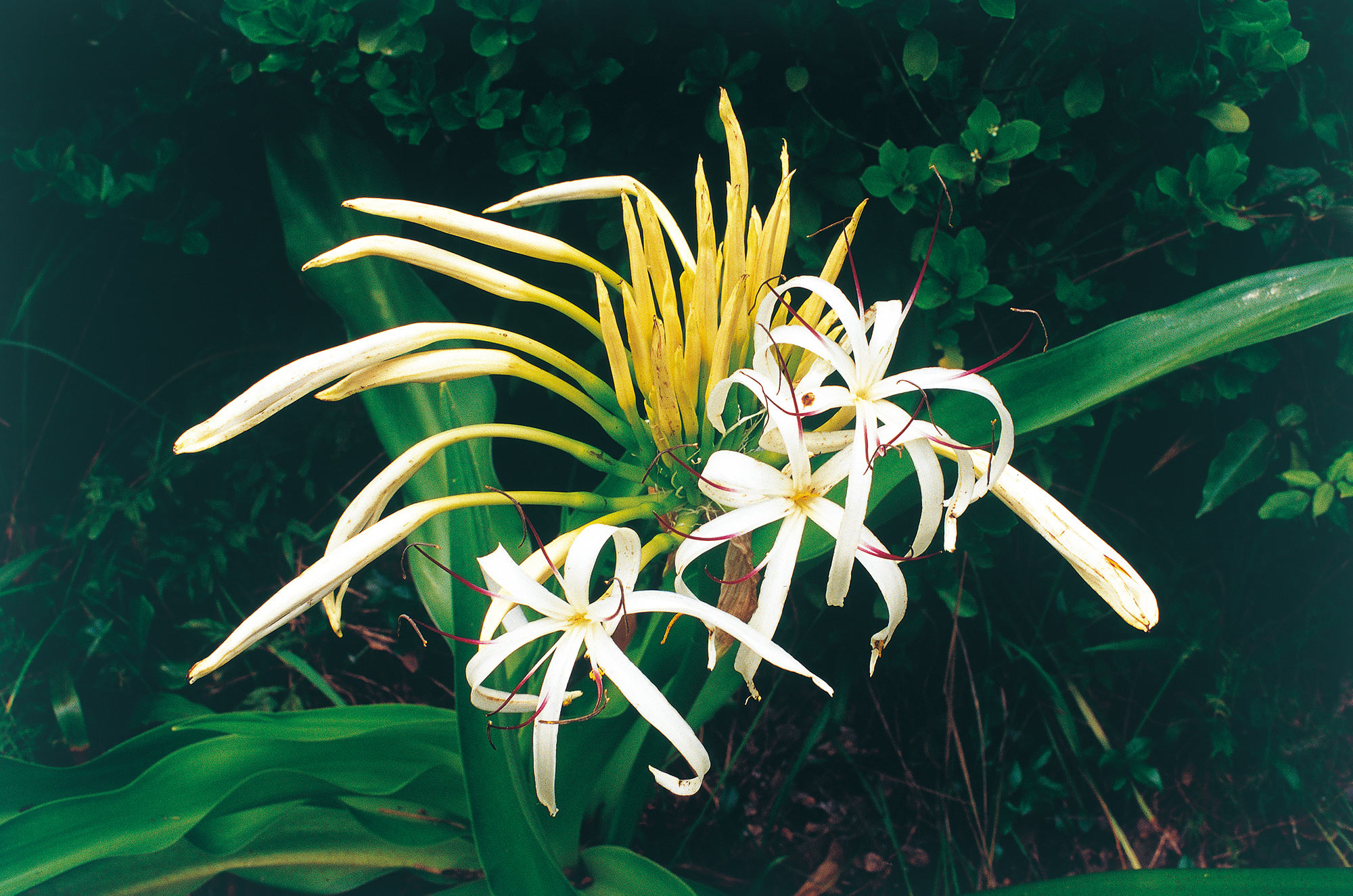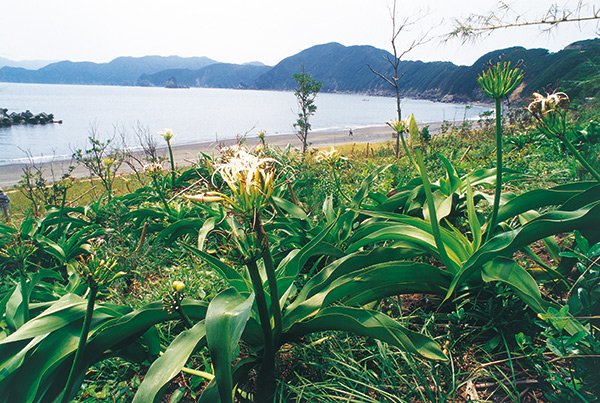

- Kennan Area
- Landscape
- Nature
Poison Bulb Cluster on Yonouzu Hazako Coast
Photography/ISHIMATSU Takeo
Lady Swaying in Sea Breeze
Poison Bulb (Crinum asiaticum) is a representative plant of the “paradise of the Black Current.” It grows naturally on the Pacific coast of the area south of Kanto, in other words on the beach of warmer climate with the Black Current circulating around. In Oita Prefecture, many are seen in Kamae and Yonouzu of Saiki, and when they bloom in the summer, they look like noble ladies in white, swaying in the sea breeze.
It is a perennial plant that belongs to Amaryllidaceae family, whose Japanese name “Hamayu (meaning seaside cotton)” came from its flower looking like yu (strip of cloth). Yu is a type of fiber made by tearing bark such as kouzo (mulberry) into fine pieces, used with nusa (a wand used for Shinto religious services) during festivals. Mount Yufu used to be spelled using the same characters as the word yu, because Yufuin basin was known as the origin of the yu fiber. Another Japanese name for the plant is “Hama Omoto,” which came from the fresh green thick leaves that look like Omoto (Rohdea japonica, Japanese sacred lily).
The plant prefers sunny beaches with well-draining sand, where it spreads large leaves around a thick stem-like cylindrical trunk. Summer is its flowering season. A large number of white flowers are scattered on the stems reaching out from the middle of leaves. It is a characteristic of the Amaryllidaceae family. Towards the end of the day around sunset, a strong scent is released to attract moths.
In Kamae, many (said to exceed 200,000 plants) are seen in Ebuto Park, Takayama Beach, Hatozu Beach, Yakata Island, and Hazako Coast in Yonouzu, and more are increasingly being planted now by the community development activities, etc., therefore it is likely to expand even more.
Active planting began in 1971, when students of Kamae High School initiated the “Hamayu (poison bulb) Movement.” It spread throughout the district and became a movement to grow community gardens. Now, even junior high school students are participating in the activity.
But it’s not just the poison bulb. They worked on reproductive and protective activities for seaside plants suitable for a seaside town, winning the Minister of Internal Affairs and Communication’s Award in Community Development as a result. As the poison bulbs grow in a sandy environment on the beach, their roots grow deep down. And that’s also true for the community development.
In the area, the name “Hamayu” is seen in many places. The language of a poison bulb is “Somewhere far.” It makes us want to go and see.

Poison bulb, attracted attention when they were planted as part of community development. (Hazako Coast in Yonouzu, Saiki)

